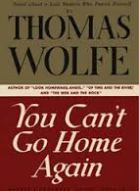11 Posthumously Published Novels
This week’s blog post is dedicated to posthumously published novels. They are presented in chronological order.
Northanger Abbey by Jane Austen (1817)

Northanger Abbey was Jane Austen’s first novel. It is thought that it was written circa 1798-99. Although the book was sold to Crosby & Co. in 1803 they decided against publication. The book was later sold back to Jane’s brother Henry. Northanger Abbey was finally published in December 1817, 5 months after its author’s demise.
The Mystery of Edwin Drood by Charles Dickens (1870)
When England’s most famous author Charles Dickens died in June 1870, his final novel, The Mystery of Edwin Drood, remained unfinished. As a result when it was published later that year the book’s killer was not revealed. The general consensus is that John Jasper, Edwin’s uncle, is the murderer.
Bouvard et Pécuchet by Gustave Flaubert (1881)
Gustave Flaubert never finished his satirical novel Bouvard et Pécuchet, despite starting work on it in 1872. Flaubert intended that it would be his seminal work, eclipsing his most acclaimed novel, Madame Bovary. However, when the book was finally published a year after the author’s death in 1880 it was not well received.
The Ivory Tower by Henry James (1917)
At the time of his death in 1916 Henry James was still working on The Ivory Tower. The book was published without an ending the year after his demise. It went on to receive considerable praise for its criticism of excessive wealth and laissez faire capitalism, although some criticised its dense prose and slow pace.
You Can’t Go Home Again by Thomas Wolfe (1940)
When Thomas Wolfe died in 1938 he left behind a vast unpublished script titled, The October Fair. His editor transformed the manuscript into the novel You Can’t Go Home Again. It is about an author who writes a book about small town America. The book goes down so badly in his hometown that he is unable to return home.
Between the Acts by Virginia Woolf (1941)
Between the Acts is a novel about a festival play in an English village, set shortly before the outbreak of WWII. It is replete with innuendo and hidden meanings. After finishing the manuscript Woolf entered a deep depression. On the 28th March 1941 she drowned herself in the River Ouse. The novel was published 4 months later.
A Confederacy of Dunces by John Kennedy Toole (1980)
John Kennedy Toole was unsuccessful in getting A Confederacy of Dunces published during his lifetime, which resulted in him becoming very depressed, culminating in his suicide in 1969. In 1980, 11 years after his death, his mother succeeded in getting it published. The book won the Pulitzer Prize for fiction in 1981.
Gather Yourselves Together by Philip K Dick (1994)
Philip K Dick is one of the most famous science fiction writers of all time. However, despite writing Gather Yourselves Together early in his writing career, it was not published until 12 years after his death. Publishers had initially refused it due to the length of the manuscript (481 pages).
Portrait of an Artist, as an Old Man by Joseph Heller (2000)
Portrait of an Artist, as an Old Man is about an aging writer attempting to write a novel that would emulate his earlier efforts. An apt subject matter considering that Heller’s most famous work, Catch-22, was published in 1961. Portrait of an Artist, as an Old Man was published posthumously in 2000, the year after his death.
The Millennium Series by Stieg Larsson (2005-2007)
 At the time of his death in 2004 aged 50, Larsson’s Millennium Series were unpublished manuscripts sitting in his house. The trilogy saw the author achieve posthumous fame. In 2008 Larsson was the second highest selling author in the world. To date over 60 million copies of the Millennium Series have been sold worldwide.
At the time of his death in 2004 aged 50, Larsson’s Millennium Series were unpublished manuscripts sitting in his house. The trilogy saw the author achieve posthumous fame. In 2008 Larsson was the second highest selling author in the world. To date over 60 million copies of the Millennium Series have been sold worldwide.
The Original of Laura by Vladimir Nabokov (2009)
 Nabokov had requested that the novel he was working on at the time of his death in 1977 be destroyed. In 2008 Nabokov’s son announced plans to publish it, and the following year, 32 years after his father’s demise, The Original of Laura was published. Many castigated the book, arguing that it was in no fit state to be published.
Nabokov had requested that the novel he was working on at the time of his death in 1977 be destroyed. In 2008 Nabokov’s son announced plans to publish it, and the following year, 32 years after his father’s demise, The Original of Laura was published. Many castigated the book, arguing that it was in no fit state to be published.





































